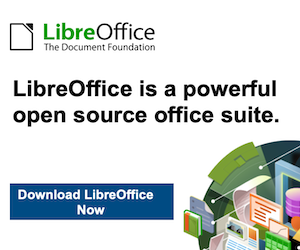The spawning of the Adblocker — We can lead a browser around by the nose all day long – We can script and code and script again until the cows come home – We can also drive as much traffic away from client sites as we would would hope to drive traffic into client sites, and all by the very web publishing practices we happen to be embracing during any given day of the week. We can promise our clients the moon in so many regards, and make it so by scripting, or otherwise, dictating to your browser, how the page should load. We can make all of the ads load first, or last, all with the simple write of a script.
The spawning of the adblocker is a direct result of web publisher abuses
As a web publisher, I embrace the adblocker. I’m tickled to death that the end user has got some sort of recourse when it comes to irresponsible web publishers. Internet web publishers should be ashamed of themselves for the abuse that they spew on a daily basis when it comes to placing ads on the net. This whole mindset of how the end user is presumably so stupid has got to go. The internet surfer is bright, intelligent, and by way of the adblocker, fairly well informed. The end user doesn’t have the time to admire how supposedly clever you are – They don’t care.
You might find yourself asking — “So how is it, Alan, that you can champion the adblocker, and yet you still have ads on your site?”
The answer is an easy one for me. I believe that ads and the end user can co-exist on the internet, in a finely tuned harmony of placement and content that will satisfy both. My success as a web publisher is directly related to my responsibility as it relates to content and ad placement. If some of my traffic uses an adblocker when they visit, all is still well with the world, because at the end of the day, I am responsible for my income — Not the ads.
I refuse, and adamantly I might add, to write a client site to be so intrusive so as to cause an end user to resort to installing an adblocker.
This from MarketingLand —
Ad-blocking software, once thought to be a relatively small-scale phenomenon, is apparently rapidly going mainstream. According to a new report from Adobe and PageFair — an Irish company founded in 2012 that “measures the cost of adblocking and display[s] alternative non-intrusive advertising to adblockers” — $21.8 billion in global ad revenues have been blocked/lost so far in 2015.
I’ll say that adblocking isn’t nearly as mainstream as the abusive ad placement practices have been over the years by irresponsible web publishers.
Some members of the web publishing industry aren’t getting the money that they somehow feel they need to have, because apparently, abuse is suppose to rake in the big bucks.
Adblocking is on the rise only as it relates to the amount of abusive publishing practices put on by ad agencies, corporations, and the web publishers they either employ or otherwise promote to display their ads. The ads market, via their irresponsible web publishers created a need for adblocking all on their own. They are quite directly responsible for their presumed loss of revenue, and yet here they are, blaming something as simple as an adblocker. Adblockers will continue to increase in use until the advertising industry gets a grip and ends it’s practice of wide spread abuse across the internet, whether it be by creating strict use parameters or some other kind of ethics rulings.
PageFair, either by accident or design, somehow felt it wasn’t important to present the real problem. If they were serious about addressing the problem, you would see web publisher abuse on the chart as well. But then again, publisher abuse can’t be shown, because if it were, PageFair wouldn’t be able to argue against the use of adblockers.
Adblocking gives the end user the chance to vote with their feet … and vote they do. Adblockers offer a glaring critique of the ad placement practices of the day.
This whole in-your-face element on-load is the stuff of amateurs … Sites that auto-start anything aren’t being built and managed by professionals – They are PnP cookie-cutter scripting nightmares that allow for things like adblockers to exist, and in many ways, prevail.
Most of these larger news site and corporate site web masters can be found pushing a broom in the back office Monday through Thursday for $15.00 an hour, only then to be found for 4 hours on Friday sitting at a desk in the server room copying and pasting some of the most annoying and useless in-your-face scripts into the site of the company he works for, all the while touting the corporate web author/master label. And this my friends, is about the long and the short of just how immaturely and unprofessionally today’s internet web pages are being doled out to the modern internet user.
When the end user goes to this corporate media site, he wants to see the news or whatever the site is supposed to be about — Likewise with a shopping site .. He’s already there, so why bother loading your ads first? .. In cases like these it’s the adblocker and the browser back button that wins the day.
Publisher desperation is unsightly on any day of the week. You can always tell who might be desperate and who might not be desperate by visiting their site. How do the ads load? Do video ads autostart? Does a Modal dialogue box appear or come swooping down after you’ve read the first two of 8 lines of content that only 6 million other sites already have wanting you to “sign-up” for a newsletter?
“In user interface design, a modal window is a graphical control element subordinate to an application’s main window which creates a mode where the main window can’t be used. The modal window is a child window that requires users to interact with it before it can return to operating the parent application, thus preventing the workflow on the application main window. Modal windows are often called heavy windows or modal dialogs because the window is often used to display a dialog box. ~ Wikipedia”
Ad placement can be done in a responsible, ethical, and respectful fashion. If the publisher feels that he or she needs to be paid for their time and effort, then writing in a pay-wall or offering premium services for a price shouldn’t be too far out of the question. If a publisher feels that his or her work is so important, then they shouldn’t have any trouble writing their own pay-per-view solution.
So there’s a “war” on adblockers? Really? … Well there was a war on pop-up blockers too if I recall, and there was also some sort of controversy wrapped around “do not track” too … Just as in the days of the Pop-up blockers, so too will be the days with adblockers. We may one day start seeing browser builds with options to block ads right along side of today’s option for blocking pop-ups.
This isn’t just some sort of tangent — There are quite a few web publishers that I know that feel as much the same as I. It’s not the adblockers that are causing all of these revenue problems for the ad industry — It’s the ad industry itself that’s caused this. And it’s up to them to clean it up. Getting rid of the adblocker won’t fix the abuse .. only the ad industry and their abusive web publishers can do that.
We learned years ago that auto-start, on-load, pop-up anything was a bad deal .. And it may surprise you that nothing has changed — It’s still the same old internet, and we still write according to the same best practices, and the auto-start, on-load, pop-up anything is still a totally bad idea if you plan to make any money, or gain any trust or any kind of authority on the world wide web.
As a web developer, and an internet web publisher, I applaud the efforts of the end user to install and use the adblocker — I use Disconnect myself, and I’m absolutely not even a little bit ashamed to do it. As a web developer/publisher, I feel that it will always be my job to put myself in the place of the end user. As web publishers, we have to be beyond the curve, ahead of the game, outside of the box — With all of that being said, I’d like to add that those of us who are serious about our craft in the web development/publishing industry can also be, some of our industry’s toughest critics — And that we already know that the ad industry isn’t fooling anyone as long as they allow the abuse to continue at the hands of their web publishers.
We could also go into the cost that the end user has to absorb as the result of irresponsible ad publishing when it comes to mobile, but I’ll address that very real issue on a different day
Here are a few handy links for reference:
(Note: The use of adblockers isn’t going to diminish as long as the abusive nature of web publishing as it might relate to ads exists)
Ad-Blocking Report: Nearly 200 Million Users, $22 Billion In Lost Ad Revenue
The 2015 Ad Blocking Report | Inside PageFair








Leave a Reply
Your email is safe with us.
You must be logged in to post a comment.